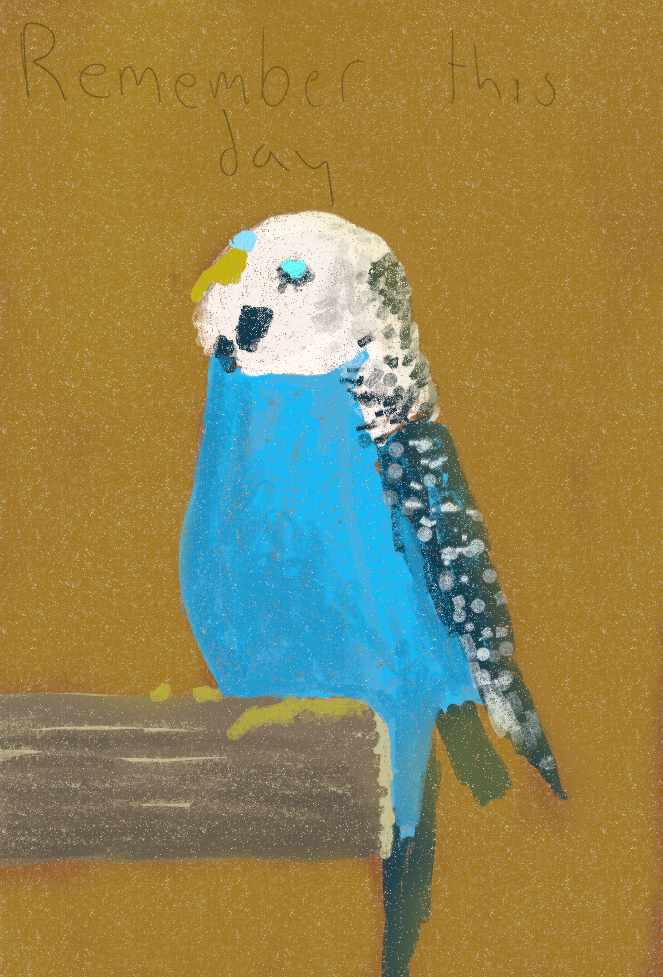

Ted Cruz is the most pathetic member of Congress, and that’s really saying something.
Proud anti-fascist & bird-person


Ted Cruz is the most pathetic member of Congress, and that’s really saying something.


I wish this motherfucker had to live off of SNAP for a month while working a shitty and dangerous minimum wage job.


And when you pray, do not be like the hypocrites, for they love to pray standing in the synagogues and on the street corners to be seen by others. Truly I tell you, they have received their reward in full. But when you pray, go into your room, close the door and pray to your Father, who is unseen. Then your Father, who sees what is done in secret, will reward you.
Matthew 6:5-6


To look at a historical analogue:
The system of government was formed whereby leading Nazi officials were forced to interpret Hitler’s speeches, remarks and writings on government policies and turn them into programs and legislation. Hitler typically did not give written orders; instead he communicated them verbally, or had them conveyed through his close associate, Martin Bormann. He entrusted Bormann with his paperwork, appointments, and personal finances; Bormann used his position to control the flow of information and access to Hitler. Hitler’s cabinet never met after 1938, and he discouraged his ministers from meeting independently.
Hitler’s leadership style was to give contradictory orders to his subordinates and to place them into positions where their duties and responsibilities overlapped with those of others, to have “the stronger one [do] the job”. In this way, Hitler fostered distrust, competition, and infighting among his subordinates to consolidate and maximise his own power.
The process allowed more unscrupulous and ambitious Nazis to get away with implementing the more radical and extreme elements of Hitler’s ideology, such as antisemitism, and in doing so win political favour. It was protected by Joseph Goebbels’ effective propaganda machine, which portrayed Hitler as a heroic and infallible leader. Further, the government was portrayed as a dedicated, dutiful and efficient outfit. Through successive Reichsstatthalter decrees, Germany’s states were effectively replaced by Nazi provinces called Gaue.


It’s definitely not a cult though.


Pack a book. Everything from hammock backpacking to week-long glamping festivals, I’ve never regretted bringing one along.


Bath is the coolest city I’ve ever been to; it started my lifelong interest in Roman history.


Should have been “Milky Whey.”


CONCEPTUALIZATION [Medium Success]


As a slogan in American political discourse, “America First” originated from the nativist American Party in the 1850s. The motto has been used by both Democratic and Republican politicians in the United States. At the outbreak of World War I, President Woodrow Wilson used the slogan to define his version of neutrality, as did newspaper publisher William Randolph Hearst. The motto was also chosen by Republican Senator Warren G. Harding during the 1920 presidential election, which he won.
The Ku Klux Klan (KKK) used the phrase at the organization’s peak in the 1920s, when racist, xenophobic sentiment was widespread; it informed many of their members who ran for political office. The Immigration Act of 1924 sponsored by Washington U.S. representative Albert Johnson proved to legislate xenophobia and white supremacy, excluding immigrants on the basis of ethnicity and national origin in an effort to preserve white racial demographics. Johnson’s leading role in the immigration restriction bill elicited strong support from the KKK.


The US does have an anti-semitism problem, but criticism of Israel and the IDF is not anti-semitism. Fuck Schumer for trying to equate the two and therefore empowering both the real anti-semites and the genocidal Israeli regime.


“Encounters” is such a funny way to phrase it. Like he was traveling through the woods on a quest and had to roll on the random table upon which a pack of wolves was also an option.


On the contrary, conservatives have one very strict standard:
“Will this candidate attack the people I hate?”
Everything else is secondary.


I feel so much safer now.


That whole Air album is amazing.


Miserere (full title: Miserere mei, Deus, Latin for “Have mercy on me, O God”) is a setting of Psalm 51 (Psalm 50 in Septuagint numbering) by Italian composer Gregorio Allegri. It was composed during the reign of Pope Urban VIII, probably during the 1630s, for the exclusive use of the Sistine Chapel during the Tenebrae services of Holy Week, and its mystique was increased by unwritten performance traditions and ornamentation. It is written for three choirs, two of five and four voices respectively, with a third choir singing plainsong responses, each singing alternately and joining to sing the ending in one of the most recognised and enduring examples of polyphony, in this case in a 9-part rendition.


Play music, read a book, draw something, play a game, or watch a movie.


She’s beautiful! I love seeing her on my feed, and I’m glad she has a person who loves her as much as you obviously do.


I can’t stop my hair from doing this when it gets long. Glad I’m finally fashionable!
Frankly, I’m a bit surprised he didn’t call it the x party.